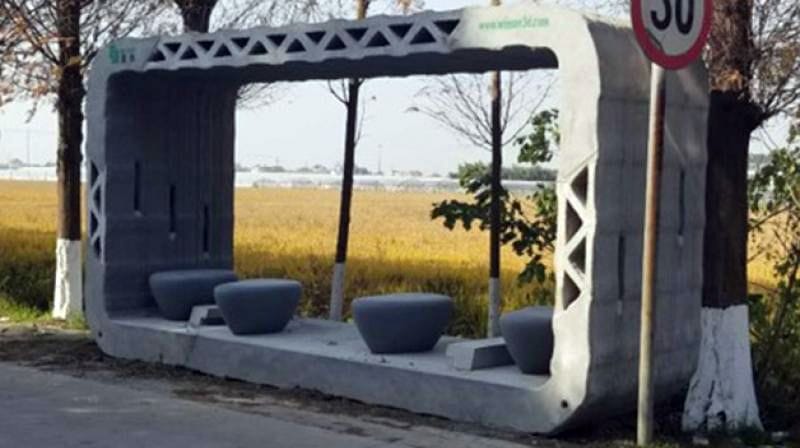
Winsun has been busy.
The China-based company’s claim to fame is their ability to 3D print large structures, including buildings. Their 3D printing process apparently involves using recycled waste material, which is extruded into useful shapes suitable for exterior installation.
I’ve been skeptical of the 3D printed building business, mostly due to the financial aspects. But let’s take a look at one of Winsun’s latest projects.
They’ve installed a completely 3D printed bus shelter at the Fengjing Ancient Town in Jinshan, just on the outskirts of Shanghai. In the image at top, you can see the basic structure and even some seats.
It’s not stated in the story linked below from Deccan Chronicle, but by examining the image we can deduce something about how this was done.
It appears that the extruded structure was 3D printed on its side, and then tilted 90 degrees to be oriented for bus passenger use. The seats are more than likely 3D printed separately. They’d be rather heavy and thus difficult to steal.
One of the challenges I’ve had with 3D printed buildings is that the technology inevitably produces only the basic foundational structure and ignores much of the remainder of the construction process, including: heating, plumbing, flooring, the entire ceiling, electrical, finishing, painting, etc. A 3D printed building is really only raw 3D printed walls and floor, and you must employ the usual contractors to complete the rest of the structure.
But the bus shelter is a very interesting project, because it requires NONE of those other building disciplines! This is actually a functional 3D printed building that is directly usable – as long as you tip it over.
According to the Deccan Chronicle story, the shelter was 3D printed in only a day, which sounds about right for this type of coarse extrusion.
You might think that if you left the machine running you could produce a lot of these shelters for use around a city.
I’d like to see a comparison of how long it takes to produce a standard bus shelter in conventional methods, which might actually take less time.
And it may be less expensive, too.
There is nothing in the story to indicate the cost factor for this shelter. Is it more or less expensive than a “normal” bus shelter?
This is the dilemma for 3D printed buildings: the true, total cost of producing a functional building suitable for occupancy.
Via Deccan Chronicle

